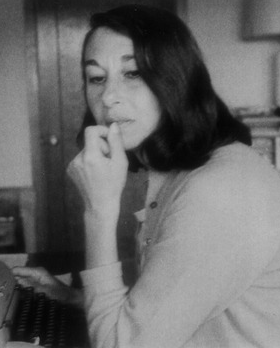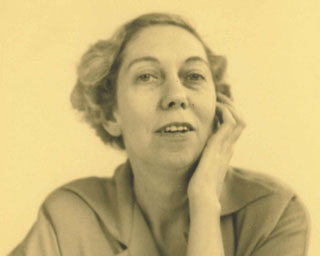First, a story.
At my primary school in Australia there was a boy who had the misfortune to be French. Laurent spoke funny. He’d been to Disneyland, a far-off fantasy land to us 1980s suburban kids, and often wore a Mickey Mouse t-shirt. The shirt had a squeaker stitched into it, part of the 3D protrusion of Mickey’s head.
We pronounced Laurent in a mean sing-song twang, with a sharp landing on the “t.”
One day we were playing on an arrangement of five upright treated pine poles, each of them about kid-height, arranged like the dots on a five-dice. The game involved jumping from one pole to another. When it was Laurent’s turn to leap he fell, belly first, onto one of the poles. It must have winded him terribly.
When he landed on the pole, Laurent’s Mickey Mouse shirt squeaked.
I told that story for quite a while afterwards.
Thought it was pretty funny.
Lor-rent.
Squeak.
Subject position, privilege, power . . . and stars
Imagine a map of stars. Any constellation. The stars represent characters on a stage, spread out in a pattern before you, relationships forming, distances settling. Now imagine that you could cut out this section of the map, making it a thickish disc of sky. You tilt this disc 90 degrees, and now you’re looking at the stars side-on. The picture changes. Stars that appeared to be side by side in the flat view are now at the top and bottom edges of the side-on disc. Just as, in the actual sky, objects that appear from our Earth perspective to be right next to each other are in fact light years apart.

Figure 1: Star map in two dimensions (constellation Orion; the red star is Betelgeuse). (Images credit: Luke Fletcher)

Figure 2: Side view.
On this angle, the stars are arranged by height. This suggests hierarchy (structural privilege). Perhaps one of the stars is a queen; another might be a prince; and so on through the positions of our fictional royal court. Or maybe they’re kids, stratified according to the logic of the playground. Step into the disc, into the space between those stars, and you see it all differently again. Relative to where you stand.

Figure 3: From inside the disc . . .

Figure 4: The world looks like this.
In the hovering-above perspective, we might ask ourselves who the characters are to each other, in what ways they interact, who hates whom, where does the tension lie? In the side-slice view, we’re looking at power dynamics. From inside the disc, we have the opportunity to stand beside the characters, experience the situation from their position.
Shifting allegiances, unequal power distribution, conflict—we recognize all of these as key ingredients of successful fiction. In fact I’m pretty sure I developed a love of reading, and later, writing, out of a fascination with these things. But they make me nervous, too. Heaven knows I avoid conflict enough in in real life; I struggle with it on the page. Especially when structural privilege comes into play.
The problem I’m getting at touches on the challenge of writing across difference—that is to say, how to write about experiences and cultures different to our own. Rebecca Makkai has written a particularly helpful article about this; Writing the Other is also a great resource. More recently, Matthew Salesses’s Craft in the Real World is a brilliant exploration of the assumptions that lie behind much of the supposedly “culturally neutral” craft of writing. It interrogates the ways these assumptions fail to serve readers and writers, especially those whose identities lie outside of dominant cultural norms (which is to say, people who are not white, middle-class, cis, straight, able, and so on). Craft, Salesses argues, is a set of expectations that do “not exist outside of society, outside of culture, outside of power.” And neither, of course, do stories.
During my MFA program, I wrestled with how to manage characters with differing levels of privilege. I worried—justifiably—about how I would be able to see around my own privilege. But as my semester supervisor, David Haynes, told me, “In writing fiction, privilege is more of a craft opportunity than it is a problem.” He suggested I explore subject position, a term that has grown out of cultural studies, where it was adapted, he explained, from critical race theory. We might describe subject position as the positioning of the subjectivity of a character (or narration) in relation to those around them (with a particular emphasis on power dynamics). The focus here isn’t on point of view, but on positioning: a way of thinking about who a character is as well as who they are in relation to the others in the world of the story.[1]
Some quick definitions
Privilege, according to the American Heritage dictionary, is a “special advantage, immunity or benefit granted to or enjoyed by an individual, class or caste.” So, social constructs and identities such as race, gender, sexual orientation, and class. Writing about race, Peggy McIntosh described privilege as an unseen backpack, “an invisible package of unearned assets that I can count on cashing in each day, but about which I was ‘meant’ to remain oblivious. White privilege is like an invisible weightless knapsack of special provisions, maps, passports, codebooks, visas, clothes, tools and blank checks.” Privilege informs our sense of what’s possible, our sense of our own entitlement, of who might naturally go first in a queue, or indeed who gets laughed at when they wind themselves. It’s also not, as McIntosh says, something normally acknowledged in polite conversation.
Privilege might be unalterable, but power shifts. I often go back to the philosopher Michel Foucault’s description of power, not as a top-down no-you-mustn’t, but a meaning-making process in which we all participate:
Between every point of a social body, between a man and a woman, between the members of a family, between a master and a pupil, between everyone who knows and everyone who does not, there exist relations of power which are not purely and simply a projection of the sovereign’s great power over the individual; they are rather the concrete, changing soil in which the sovereign’s power is grounded, the conditions which make it possible for it to function.
That first phrase, “between every point of a social body,” reminds me of a constellation. It makes me think of all the daily movements, agreements, negotiations, abuses, between people—between characters. Of the ways that power might be negotiated between them, depending on the context. Our side-on view of the stars, which invites hierarchical thinking, can never fully capture the complexity of that: the way we are all, to borrow a phrase from the author Sarah Stone, “predator and prey.”
As to characterization, the key element I have in mind is Margot Livesey’s description of “attitude”: how a character “regards herself and her world” and “her sense of where she stands in society.”
I’m treating subject position, then, as a tool for exploring characterization, privilege and power in fiction. You might also think of it as another, perhaps more nuanced, way to think about perspective.
A tour of the texts
Allan Gurganus’s novella “Blessed Assurance,” ZZ Packer’s short story “Brownies,” and J.M. Coetzee’s novel Disgrace are all concerned with privilege and power. “Blessed Assurance” is narrated by a white man who sold funeral insurance to Black people in the South in the 1940s; “Brownies” focuses on a troop of Black Brownies who plan to “kick the asses” of Troop 909 (who are white); and Disgrace centers on a white professor of modern languages in post-apartheid South Africa. Two of these texts (“Blessed Assurance” and “Brownies”) are told in first-person retrospective; the other is in close third-person (limited omniscience). They are all, in other words, told from a character-specific point of view: from a particular position inside the disc. Each of these texts is deliberate about who is telling the story, and where they stand when they tell it: a white man interacts with a Black community; a Black girl observes and for a time fails to properly see a group of white girls; a womanizer struggles to understand his daughter.
The task, as I came to see it, was to define the subject position of the character-narrator in each text. I began by looking at structural privilege. What, for example, is the character’s gender, race, educational status? This was useful, as far as checklists go. Next, returning to Livesey’s notion of attitude, I examined the character-narrator’s sense of how they fit in the world of the story: Laurel’s position in the social pecking order, for example, or David Lurie’s social disgrace. This provided a sense of where each character stood, but it didn’t capture any sense of propulsion. So I went looking for movement. Structural privilege may appear like items on a checklist, but power shifts. In what direction does that shift take the character? Do they gain power, lose it, or experience a temporary change?
Using the lens provided by these three elements (structural privilege, attitude, and movement) I offer a description of each character-narrator’s subject position. From there, I seek to answer two primary questions: first, how does this subject position invite a reader to experience privilege? And second, how does that subject position affect the characterization of the other characters in the text?
I hope, with this investigation, to sharpen my craft tools for thinking—and talking—about how fiction engages with the world we live in.
“Blessed Assurance”: An ascendant man and the dirty secret of privilege
In 1940s North Carolina, nineteen-year-old Jerry, the poor white son of cotton mill workers, takes a job as a funeral insurance salesman in a Black neighborhood. He’s not comfortable with the work. There are large, threatening dogs at every house; he can’t understand why people would pay weekly funeral premiums when they apparently don’t have enough to eat; and the system seems unfair. To keep coverage, customers must make weekly payments. If they miss two payments, they default not only on their current policy but also on any previous policies they’ve paid up, too. The insurance company keeps all the payments made to it, sometimes over the course of many years and coming to many thousands of dollars. But Jerry needs the money—for his parents, who are sick with “brown lung” from inhaling cotton fibers, and for his education, which he is (slowly) self-funding. At first the residents of “Baby Africa” seem all the same to Jerry, but over time he comes to know one of his clients in particular: Vesta Lotte Battle, a ninety-plus-year-old formerly enslaved woman who survives on the money she makes taking in ironing, repairing broken china, and in regular checks from her daughter, Pearl. When Vesta Lotte Battle (who has paid her premium every week for years) falls behind on her payments, Jerry covers them. Ultimately, however, he decides to stop. The story (which is told in first-person retrospective by the older Jerry, now known as Gerald and in his late fifties) follows Jerry as he wrestles with the limits of his willingness to help Vesta Lotte Battle, and his resistance to facing the reality of racism and his own privilege.
 How best to characterize Jerry’s subject position? We can talk about race, gender, class, and education—and all of those elements are relevant. Jerry enjoys structural privilege as a white person and a man. As the poor son of mill workers, he is less economically privileged than the other white people in his community. But he is gaining an education, which is a key part of his social mobility (Gerald becomes a wealthy professional). This description is still in the checklist phase, though. It does place Jerry in a hierarchy, which is helpful in thinking about where the story is coming from: somewhere in the upper half of our side-on disc (if you recall, this arranges our characters a little like plots on a line graph). So, for example, we can say that Jerry is more privileged than Vesta Lotte Battle on pretty much every scale but shares some of her economic disadvantage—he comes to Baby Africa to sell insurance having himself been relegated to the poor mill area to sell encyclopedias (a more or less impossible task).
How best to characterize Jerry’s subject position? We can talk about race, gender, class, and education—and all of those elements are relevant. Jerry enjoys structural privilege as a white person and a man. As the poor son of mill workers, he is less economically privileged than the other white people in his community. But he is gaining an education, which is a key part of his social mobility (Gerald becomes a wealthy professional). This description is still in the checklist phase, though. It does place Jerry in a hierarchy, which is helpful in thinking about where the story is coming from: somewhere in the upper half of our side-on disc (if you recall, this arranges our characters a little like plots on a line graph). So, for example, we can say that Jerry is more privileged than Vesta Lotte Battle on pretty much every scale but shares some of her economic disadvantage—he comes to Baby Africa to sell insurance having himself been relegated to the poor mill area to sell encyclopedias (a more or less impossible task).
But this doesn’t give me everything I need to understand what animates the story. It can’t account for the complexities in the interactions between characters, the interpersonal negotiations that can shift power dynamics.
This brings me back to Livesey’s notion of attitude: how does Jerry regard himself and his world—what’s his sense of where he stands in society? Jerry is acutely aware of his own poverty and the injustice his parents suffer. He wants to improve his situation (and his family’s). Which makes the direction of Jerry/Gerald’s primary, as in defining, movement in the story pretty clear: upwards. The years Jerry spends in poverty are a phase of his life, not a destination. “Blessed Assurance” is the story of an ultimately ascendant man who is working hard to remain blind to his own privilege. He wants to justify himself. We see this in the opening paragraph:
I sold funeral insurance to North Carolina black people. I myself am not black. Like everybody else who was alive fifty-nine years ago, I was so young then, you know? I still feel bad about what went on. My wife says: telling somebody might help. Here lately, worry over this takes a percentage of my sleep right off the top.—So I’m telling you, okay?
The “you” in that last line turns out to be a psychiatrist, but this is not a therapeutic narrative—at least not in the sense that Gerald achieves much personal insight. This lack of insight appears to be the point. Gerald recounts his relationship with Vesta Lotte Battle because it troubles him. Am I a bad person, he appears to be asking? To which he would have us hear: no. “I only did it to put myself through college. I knew it wasn’t right”; “Other sales kids owned cars. I had to walk.” But we know Jerry’s real, largely unacknowledged, feelings are more complex—that the answer to that question is, in part, yes: he is a bad person. We know this because Gurganus makes great use of narrative distance, which Peter Turchi defines as the “difference between what [a narrator] tells us and what we understand to be true.”[2]
Narrative distance is used throughout this story to show a reader what Jerry either does not or chooses not to see. A telling example is in the space between what Gerald chooses to tell us about his decision to tell his boss, Sam, about Vesta Lotte Battle’s unmet payments, and what a reader recognizes as true. I confess it took me a while to make this connection, but the clue is on the first page: “I only did it to put myself through college.” One assumes Jerry is talking about taking the job in the first place, and this is partly true. Sam lays it out in a pained voice during their first meeting: Windlass Insurance’s clients may be poor, but they’ll “cough up fifty cents to three bucks per Saturday for a flashy coffin and last party . . . you might get to feeling like maybe you’re stealing from them . . . you’ve got to accept how another type of person believes.” This last point is true enough, but the real theft is in the company’s forfeiture policy. Jerry’s aware of this; it’s why he starts covering his clients’ payments when they fall behind. But he’s behind on his tuition payments, and his parents are ailing. After handing Sam the list of nine clients who are lagging on their payments—among them, Vesta Lotte Battle—Jerry visits the night-school office to make his payments. And here’s the second clue: “I’d got certain bonuses and could again fund my education.” Certain bonuses? Gerald never tells us what they were. Later, Jerry writes a check for $200 and donates it to the Afro-Baptist Free Will Full Gospel Church. Where did a young man for whom “six dollars meant something” get that kind of money, after paying his overdue tuition bill? He must have been given a share of the money Windlass Insurance reclaimed from its defaulting clients—the nine names on Jerry’s list.
For sixty pages, Gerald tells us all about this job he had when he was nineteen, his feelings about his clients, his growing attachment to Vesta Lotte Battle, his own disadvantage, and why that justifies him in taking on the job and squealing on his clients . . . but he never explores that bonus and his decision to accept it. That’s what he did to put himself through college: take his clients’ money and use it to fund his social mobility. Years later, Gerald can’t bring himself to admit it, not even to his psychiatrist. Because to do so would make one of his core beliefs—that he’s a self-made man—a lie.
In “Blessed Assurance,” then, a reader is invited to experience privilege as a dirty secret, something to be explained away and avoided. In this context it’s particularly effective to make Jerry white and poor. If Jerry were as privileged as one of the wealthy college boys he sees playing basketball after his long day of premium collecting, Gerald’s explaining-away would have a different quality. Jerry would be less likely to have any occasion to develop a lasting connection with the residents of Baby Africa (white people make rare appearances in the neighborhood), and he would share no understanding of Vesta Lotte Battle’s poverty. Jerry’s ability to see that “Vesta Lotte Battle’s former owners still mostly owned my own broken-down wheezing parents” is essential to his ability to connect with her. It also makes Gerald’s ascension all the more poignant. Jerry/Gerald’s primary movement might be up, but part of him will always be looking back, unable to acknowledge this uncomfortable truth: he succeeded through hard work and privilege, by getting a leg up from others’ misfortune.
Characterization of others: Vesta Lotte Battle
How, then, does Jerry/Gerald’s subject position—which I’ve shorthanded as “ascendant man”—affect Vesta Lotte Battle’s characterization? VLB, as Jerry calls her, is pivotal to the story, but we never hear directly from her in a point-of-view sense. What craft choices allow Gurganus to characterize VLB through Jerry/Gerald’s position? I’m going to focus on counterpointed characterization.
I’ve long been fascinated by the ways people create each other: how the simple act of looking invites comparison, which strengthens our sense of ourselves. As Charles Baxter writes in his essay on counterpointed characterization, “We seem to know ourselves, socially at least, only by comparing ourselves to someone else, to others.” This kind of thinking works on larger scale, too.
In her essay collection Playing in the Dark, Toni Morrison wrote about the way that “American Africanism” has been crucial to the construction of whiteness in American culture—the racial other being the shadow alongside which the “American as new, white and male was constituted.” In other words, the construction of a default identity—white and male, which might include such attributes as loving father, benign boss, and good citizen—takes place against the relief of, and in a sense thanks to, the racial other. A wealthy white man can appear more hardworking against the stereotype of a poor Black woman, for example. Within the terms of the binary, one creates the other. And the power of the binary remains unspoken.
 We find counterpoint and binary play throughout “Blessed Assurance.” This makes sense, since we are in the first-person retrospective, and almost by definition Jerry will approach other characters in contrast to himself. Any time we meet VLB we are seeing her in contrast to Jerry’s subject position. Take, for example, Jerry’s first genuine meeting with VLB. Jerry’s incompetence at changing a tire in the rain is a clear contrast to VLB, who enters the scene and tells Jerry to move out of the way, seeming “to hate incompetence and the pleasure my incompetence was giving her neighbors.” The tire is soon replaced and Jerry is wearing dry clothes and sipping tea. The scene offers little specific to Vesta Lotte Battle’s person, other than the description: “this dark old woman, scarecrow thin, hands pressed on hips, acting furious with me,” and not much more of her house: just the laundered flour sacks Jerry is given for towels, the old maroon silk dressing robe (one assumes VLB’s own) he wears while his clothes dry, the porch, and hot tea in mismatched cups. She has only two lines of dialogue: “Get out the way, you” and “Get out them soggy clothes, you.” And yet her character is drawn precisely, her competence all the more striking for its counterpoint with Jerry’s blind incompetence.
We find counterpoint and binary play throughout “Blessed Assurance.” This makes sense, since we are in the first-person retrospective, and almost by definition Jerry will approach other characters in contrast to himself. Any time we meet VLB we are seeing her in contrast to Jerry’s subject position. Take, for example, Jerry’s first genuine meeting with VLB. Jerry’s incompetence at changing a tire in the rain is a clear contrast to VLB, who enters the scene and tells Jerry to move out of the way, seeming “to hate incompetence and the pleasure my incompetence was giving her neighbors.” The tire is soon replaced and Jerry is wearing dry clothes and sipping tea. The scene offers little specific to Vesta Lotte Battle’s person, other than the description: “this dark old woman, scarecrow thin, hands pressed on hips, acting furious with me,” and not much more of her house: just the laundered flour sacks Jerry is given for towels, the old maroon silk dressing robe (one assumes VLB’s own) he wears while his clothes dry, the porch, and hot tea in mismatched cups. She has only two lines of dialogue: “Get out the way, you” and “Get out them soggy clothes, you.” And yet her character is drawn precisely, her competence all the more striking for its counterpoint with Jerry’s blind incompetence.
The thing with any binary, though, is that it doesn’t exist in isolation. The members of one pair may be creating one another over here, but another is forming over there. By which I mean that there are as many points of comparison as there might be stars on a map. We find an example of this around the halfway point, when a white woman whom Jerry dubs “Mrs. Fancy Schmantsy” comes by during one of Jerry’s visits. As the scene opens, Jerry has just noticed the “Can Fix” sign in Vesta Lotte Battle’s front yard. Inside the house is a “fine old soup tureen . . . imprisoned in its own splint.” VLB’s mending is so finely done that Jerry is unable to see the repairs. Jerry enters this scene youthfully impatient, wondering if the tureen will ever hold soup again (the short answer from VLB is yes). Jerry’s misunderstanding of VLB’s work is telling:
She seemed to consider mending a parlor game, said she’d learned it in a henhouse-workshop. A lady missionary, returned from China, taught local black girls this skill in the 18 and 70s. Final exam: you personally chose one hen’s egg and jumped on it, then you personally rebuilt it so it looked unbroken to the picky naked eye. Excellent training for the world.
Jerry’s assumption that VLB considers mending a game, when clearly the world is so broken, carries both his attitude and a sense of VLB’s forbearance. The implication is that Jerry may be playing a young person’s game, but VLB is in another league. The introduction of a third figure in this scene, Mrs. Fancy Schmantsy, deepens this sense of VLB’s character. The woman appears, apparently without knocking, offers an empty apology for “having barged in” and hands over a pulverized tea cup in a business envelope. The dynamic shifts. Where Jerry and VLB were counterpointed against each other, now this wealthy white woman is counterpointed against Jerry and VLB. Jerry understands more about the work of repair—and of all that might represent—than Mrs. Fancy Schmantsy does. So when the woman addresses Jerry, asking “what would we do without her?” both Jerry and VLB ignore the remark. Mrs. Fancy Schmantsy’s comment that if the cup can’t be fixed, “Mother’s service for twenty-four is totally useless” enhances this alignment between Jerry and VLB. Jerry doesn’t report VLB’s reaction to that statement, but she remains a solid presence in the room. One can easily imagine VLB’s inward eye-roll.
The risk, of course, in counterpointing a flawed character against a more likeable one is that one will come off as too perfect—without attitude. This would be a failure of characterization. It’s true that the VLB we come to understand via Jerry’s subject position has few apparent flaws: she works hard, looks after the neighborhood children, and wordlessly provides Jerry with tea and sugar every time he visits (even as he wonders how someone so poor is able to feed herself). But if we think about the key movement in Jerry’s subject position—that ascension and its attendant need for justification—there’s another element to the counterpoint here. There is pushback to the portrait, and against Jerry/Gerald’s need to justify himself. Jerry may be aware that VLB won’t hold it against him if he stops covering her payments, but we don’t expect her to offer absolution, either. For example, as Jerry gets closer to deciding to stop helping VLB, he asks her whether she’s heard from her Pearl. Will she answer him? VLB only shakes her head. Jerry is irritated. “Mrs. Battle, with all due respect, I earn about two dollars and eighty cents per Saturday doing this. A lot of it’s going to you . . . I can’t keep this going much longer.” Vesta Lotte Battle does not say: I understand. I know this is hard for you. She refuses to give him the gratitude that would place him in the role of a savior, a “good person.” She only says: “You ain’t got to.”
Vesta Lotte Battle refuses to participate in Jerry/Gerald’s dirty secret. She’ll take his money. Give him tea with sugar while it suits her. But she won’t play the binary game. Won’t make a show of searching for nonexistent coins, never asks him explicitly for help. In the world of the story, Vesta Lotte Battle hasn’t got much in terms of privilege. But she has power. Jerry/Gerald’s struggle to understand the nature of that power and his detailed attempt to justify his own privilege serve to deepen and complicate VLB’s characterization—and become an inextricable part of it. We don’t need to be inside her head to know who she is. “Odd,” Gerald reflects, “the worse I am at describing the power of Vesta Lotte Battle, the surer I am of it, the deeper still I feel it—right up under the rib cage.”
[1] I’m treating subject position as distinct from related terms such as narrative stance and gaze. Narrative stance is a writing term which refers to the attitude or “stance” of the narrative towards its characters and the world they exist in; gaze comes out of the feminist tradition and describes the framework through which it’s assumed the world is viewed.
[2] I’m using the term narrative distance to describe the gap between what is on the page and what a reader understands; this might also be called dramatic irony. I understand narrative distance to be distinct from psychic distance, which describes how close the narrator is to a character’s thoughts. Salesses offers a more encompassing notion in his definition of tone as an effect rendered through tools such as narrative and psychic distance. Tone, he writes, “offer[s] a kind of lens through which to understand the characters towards each other and the world . . . It is an orientation toward the world.”






